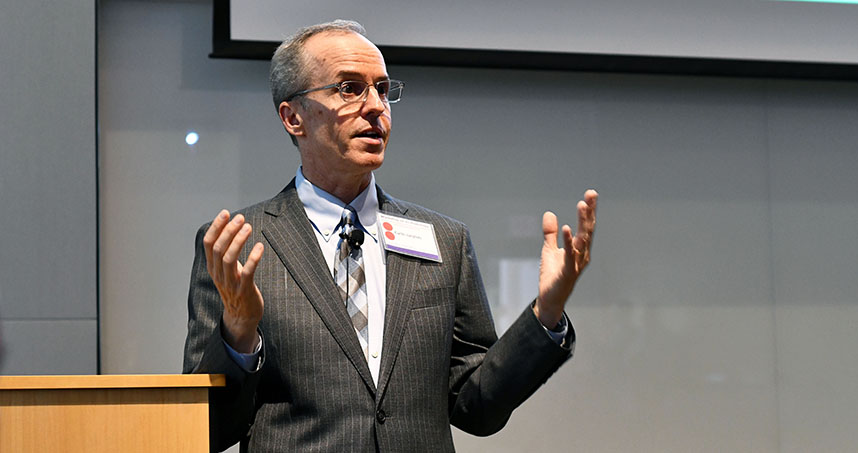Workshop Explores Impact of Artificial Intelligence on Radiology
More than 150 radiologists, engineers, and computer scientists discussed innovative approaches to using AI in radiology.

Deciphering a medical image is highly complex, requiring advanced medical knowledge, specialized technical skills, and case-by-case judgment. With technology developing at an unprecedented pace, what happens when you introduce artificial intelligence to radiology?
The question drew more than 150 radiologists, engineers, and computer scientists for an all-day workshop on AI in radiology and medical decision-making on September 11. The event—part of a developing relationship between Northwestern Engineering and Northwestern University Feinberg School of Medicine—encouraged collaboration and discussion across disciplines in pursuit of research goals at the intersection of technology and medicine.
“One of our goals in computer science is to collaborate seamlessly and organically with other areas of the University. This workshop embodies that vision,” said Samir Khuller, Peter and Adrienne Barris Professor of Computer Science and department chair.
The event included presentations on innovative approaches to using AI in radiology, case studies of problems facing radiologists aimed at informing AI researchers (and vice versa), lightning talks by Northwestern researchers, panel discussions, and networking opportunities. It was held in Northwestern’s new Louis A. Simpson and Kimberly K. Querrey Biomedical Research Center— the largest biomedical academic research building in the US.
Organizers of the event included Virginia Hill, assistant professor of radiology at Feinberg; Todd Parrish, professor of radiology at Feinberg and (by courtesy) of biomedical engineering; Aggelos Katsaggelos, Joseph Cummings Professor of Electrical and Computer Engineering; and Larry Birnbaum, professor of computer science.
“AI has incredible potential to help radiologists improve patient safety, make us more efficient, and take some of the tedious tasks in radiology out of our hands,” said Hill.
In his keynote address, Curtis Langlotz, director of the Center for Artificial Intelligence in Medicine and Imaging at Stanford University, shared an example of a woman with congestive heart failure whose radiologist did not detect a small mass in her chest radiograph. A computer using AI techniques, however, did find it. “Radiologists are humans. We make mistakes, and we need help with our work. AI can help radiologists be better,” he said.
Looking forward, the relationship between McCormick and Feinberg continues to develop. “The workshop strongly demonstrated the existing need for further strengthening the collaboration between McCormick and Feinberg in this area of AI and medicine,” said Katsaggelos.
